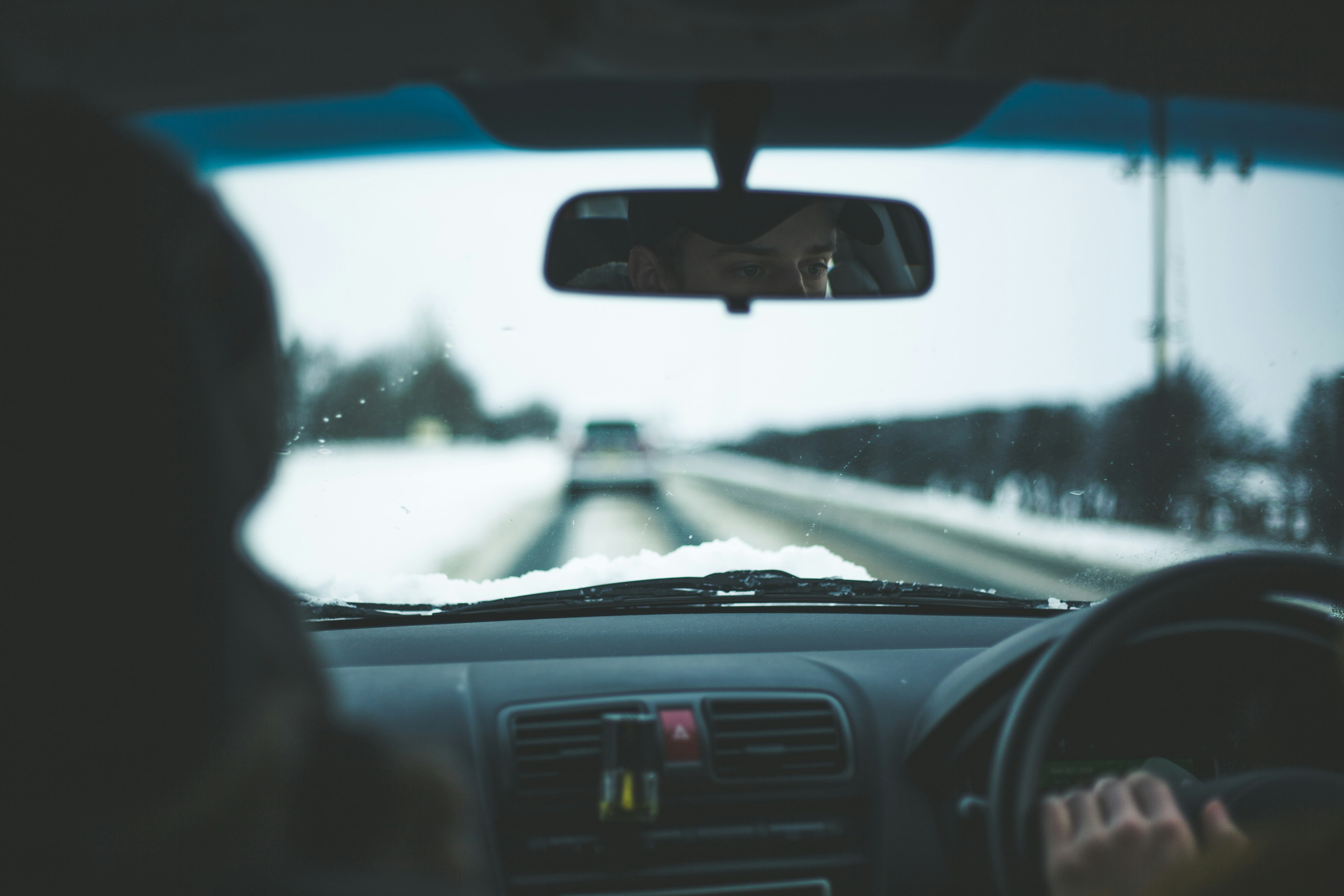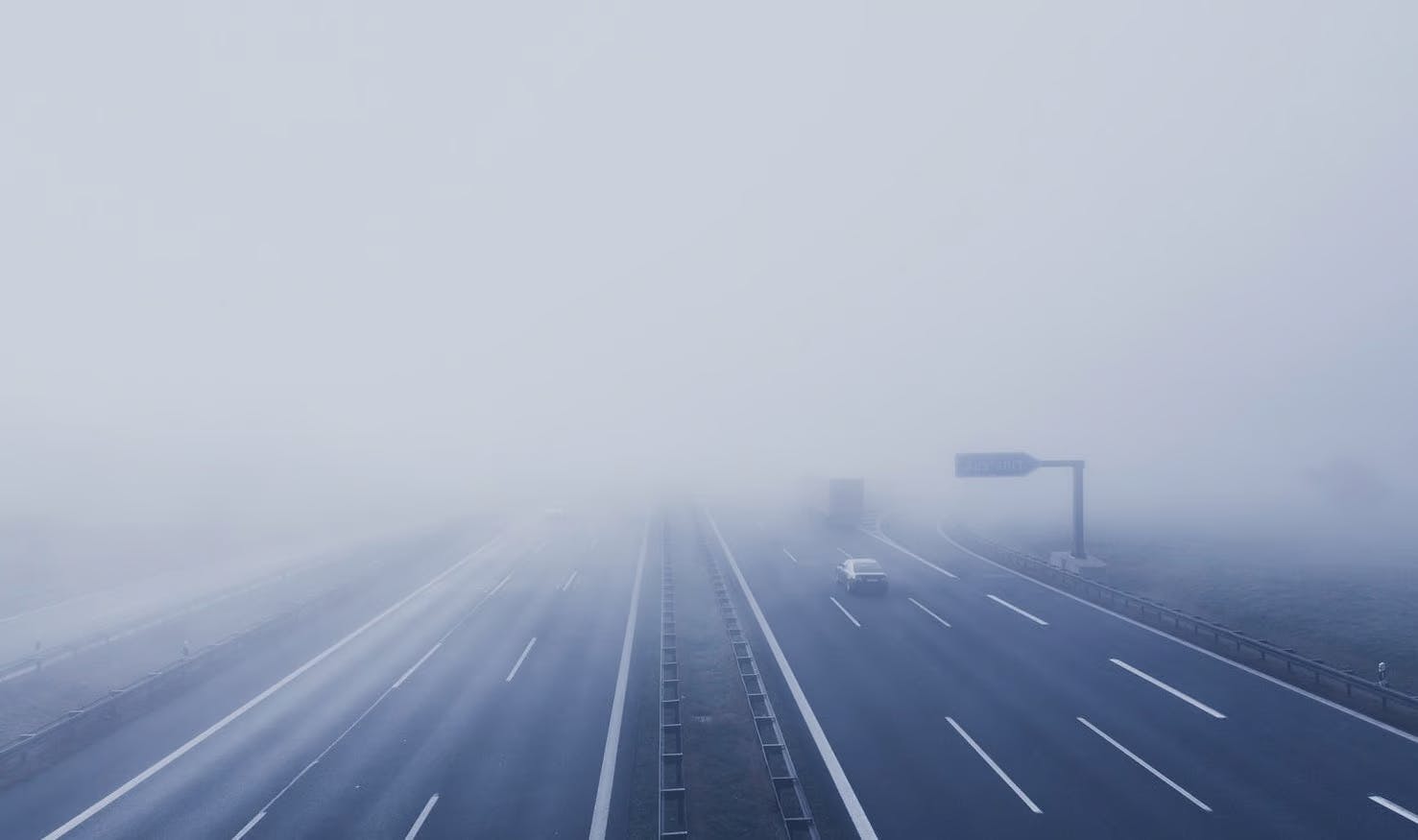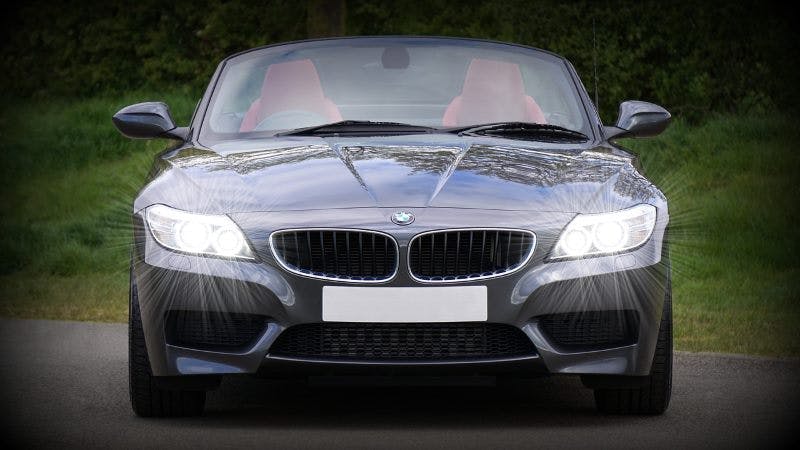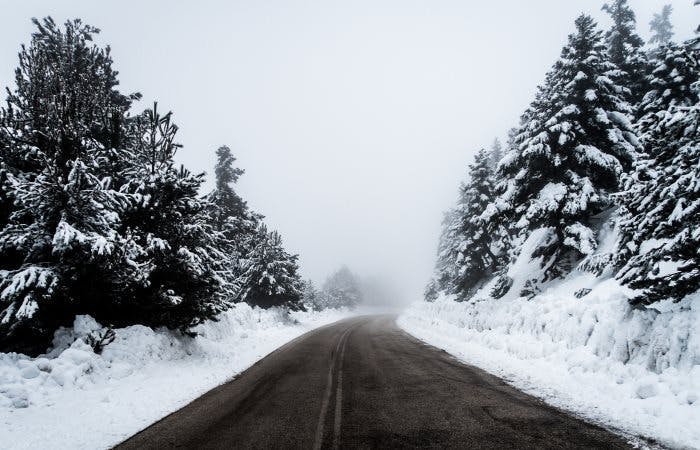
What do you think of when someone says winter? Call us scrooges if you want, but the words that spring to mind for us are wet, cold and dark. Not exactly paradise and certainly not ideal driving conditions! However, if you live in the UK, we're afraid these are going to be fairly common driving conditions.
If you're thinking about learning to drive sometime soon, you may be put off by the idea of taking your lessons in winter—precisely because of these potentially treacherous conditions. You may face snow, ice and even fog. Visibility is reduced in the colder months, and the car may require some preparation before you set off.
While all this sounds like a lot of extra hassle, you'll need to tackle these driving conditions at some point. Sure, you learn a lot of the rules and safety precautions surrounding cold weather on your theory test, but nothing beats first-hand experience when it comes to learning.
Ice and Snow

A major characteristic of winter that can affect your driving is the cold weather and the conditions it brings with it. The most dramatic of these are ice and snow. A festive sprinkling of snow may look pretty, but it makes road surfaces slippery and reduces visibility. In certain extreme circumstances, it may even result in cancelled driving test. If your test is cancelled due to bad weather, you won't be able to get compensation for a driving test cancellation—though, the DVSA will book you a new one free for charge. You need to get accustomed to spotting icy patches on the road and learning how to drive on them—for the few occasions where you may have no choice. Thick snow could also mean that you find yourself stuck in a literal rut (no, really)!
Speed
It might seem obvious, but in wintry weather you need to reduce your speed and allow extra time for manoeuvres. Turning corners, increasing speed or slowing down—they all need to be done with extra care and vigilance. Icy roads increase braking distances by as much as 10 times, meaning your overall stopping distance is much greater than when you're on dry ground. Heavy showers or snow fall may mean that other drivers do not see you.
Stopping distances on icy roads
| Speed (miles per hour) | Thinking distance (metres) | Braking distance (metres) | Total stopping distance (metres) |
|---|---|---|---|
20 | 6 | 60 | 66 |
30 | 9 | 140 | 149 |
40 | 12 | 240 | 252 |
50 | 15 | 380 | 395 |
60 | 18 | 550 | 568 |
70 | 21 | 750 | 771 |
Having said that, you also need to be careful not to drive too slowly, as this could cause problems for other road users. Achieving this delicate balance is going to be a lot easier if you have an instructor with you. Winter may also be the first time you experience the sensation of the car skidding. You'll need to learn how to reduce or avoid this phenomenon. Again, these can be scary experiences the first time, so it's reassuring to have a driving professional with you.
Control
Driving on a slippery surface means it's much easier to lose control of your car. To counter this, all of your actions need to be carefully considered and controlled. Be gentle with the pedals, don't make any sudden changes (unless forced to) and increase the distance between you and the car in front. In icy conditions, it is recommended that you leave a gap of at least 20 seconds between cars.
The most dangerous aspect of winter weather is black ice. This is ice on the road's surface that is largely invisible to the naked eye. If you're driving in a controlled manner, you can usually feel when the car is on a precarious surface. Any sudden changes can cause even winter tyres to lose their grip on the road, so it is safer to slowly navigate these areas.
And don't let any festive bangers distract you while driving — with the roads tricker than usual to navigate, you need to have your wits about you!
Visibility Issues

Aside from ice and snow, another winter weather gift is fog. Yes, it looks atmospheric and spooky, but it can be a pain in the bum if you're driving through it! Fog, snow and rain all affect your visibility, so there's a few extra steps you need to take when heading out on the road in winter.
Prepping Your Car
As your poor car's likely been outside all night, by the time you come to drive it in the morning, your windscreen may have frosted over. In extreme cases your car may even be covered in snow. It will therefore need to defrost before you set off anywhere. For this reason it's a good idea to keep de-icing spray and a scraper in the boot of your car. Your windscreen and back window should be completely clear before you begin your journey.
Once the car has been cleared and defrosted, be aware that your windows are likely to fog up due to the changing temperatures. That's right, you've just gotten rid of one visibility hazard and another appears! This is where your demisters come in. Find this button in your car and your visibility woes are over—given a couple of minutes, at least. It can be a bit worrying if you set off too soon and suddenly notice your windows are misting over. At least if you're with an instructor they can warn you of this process and advise how long each defrosting stage will take.
Take into account that if you're a learner, these extra steps may eat into your lesson time. Then again, your instructor may do this before they pick you up. Either way it's a process you need to get used to.
Lights

As well as weather causing visibility issues, there are fewer hours of daylight in winter. This means that if you're taking driving lessons during this season, you will quickly learn how your car's lights should be used. You have three main types of lighting at your disposal: full beam headlights, dipped headlights and fog lights.
In the dark you will mainly be using dipped headlights. However, if visibility drops significantly you can use full beam headlights. If this is the case, you should always turn them back to dipped when you see other cars, so as not to dazzle them. In fog and snow, when visibility is particularly poor, you can make use of your fog lights if you can't see more than 100 metres in front of you. Lights are there both for you to see and be seen. Keep this in mind when deciding when to switch them on.
Be aware that pedestrians will also have visibility issues and, particularly if the weather's bad, may be in a rush to get across the road. Yes, it's annoying and sometimes dangerous, but try to appreciate the fact that you're in a warm car and they are cold and wet!
Learning to Drive in Winter

Now that we've covered the extra factors that come with learning to drive in winter, let's weigh up whether it's a good idea or not...
Cons
✕ If you suffer from anxiety, the prospect of driving in winter can be intimidating.
Maybe you're struggling to take the first step and book a lesson because driving makes you nervous. If this is the case and wintry conditions would add to your fears, it might be best to hold off until the warmer months arrive. If you take this route, we recommend you then do a Pass Plus course. This will expose you to other road types and conditions, when you're slightly more confident.
✕ Because there's a few more things to cover, the learning process could take more time.
This depends on the person, but getting used to bad conditions and prepping the car could lengthen the learning period. Plus, if you're in school or college, driving in the summer would give you more time to squeeze in lessons—one of our key tips for learning to drive quickly.
Pros
✓ Winter presents the most challenging conditions to drive in, so learning in this environment is incredibly useful.
Rain, snow, ice, fog, visibility issues—if you can overcome all these problems, driving in any season will be a doddle for you! As we've mentioned, you need to learn all of these skills at some point. Why not get it all under your belt at the beginning of your driving journey? There's no better way to make sure you're really ready to take on the open road alone.
✓ It's safer to experience these conditions with a qualified instructor at your side.
Wintry conditions can be a bit daunting when you first take them on, so it makes sense to tackle them first time with a driving expert. That way, you're not left to work it out on your own later! This could actually be dangerous. You'll be confident driving in snow and ice if you've been taught the correct way to do so.
If you learn to drive in winter, you will be hitting the road with a well-rounded driving education. You'll laugh in the face of weather warnings and handle hazardous conditions like a pro! By the time you take your test you should feel confident about taking on any driving scenarios. If you actively avoid winter, you're depriving yourself of some key skills and experiences. Plus, in comparison to some cities around the world, our road conditions are actually pretty good—with or without snow!
Obviously if you're ready to learn way before winter, you should start driving whenever it's convenient. All we're saying is, don't put it off because of a bit of frost! Just be prepared for the driving test wait times, and find out if your test will go ahead in adverse conditions.
Subscribe for driving advice, offers & more
We'd love to let you know about our courses, news and offers via email. You may unsubscribe at any time.
Star Genie Limited trading as PassMeFast. Company number 10093359
Copyright © 2024 owned by Star Genie Limited
PassMeFast, Blue Tower, MediaCityUK, Salford, M50 2ST

